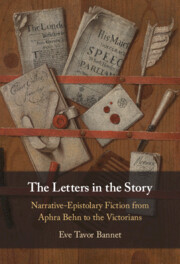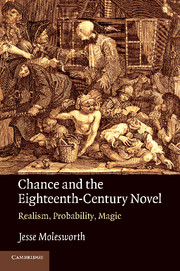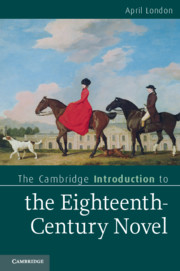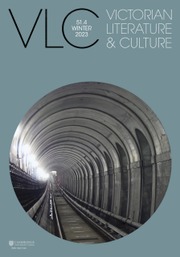The Letters in the Story
The long tradition of mixta-genera fiction, particularly favoured by women novelists, which combined fully-transcribed letters and third-person narrative has been largely overlooked in literary criticism. Working with recognized formal conventions and typical thematic concerns, Tavor Bannet demonstrates how narrative-epistolary novels opposed the real, situated, transactional and instrumental character of letters, with their multi-lateral relationships and temporally shifting readings, to merely documentary uses of letters in history and law. Analyzing issues of reading and misreading, knowledge and ignorance, communication and credulity, this study investigates how novelists adapted familiar romance plots centred on mysteries of identity to test the viability of empiricism's new culture of fact and challenge positivism's later all-pervading regime of truth. Close reading of narrative-epistolary novels by authors ranging from Aphra Behn and Charlotte Lennox to Frances Burney and Wilkie Collins tracks transgenerational debates, bringing to light both what Victorians took from their eighteenth-century forbears and what they changed.
- Discovers a long, previously forgotten, tradition of narrative-epistolary novels that was largely identified in Britain with female novelists
- Demonstrates how narrative-epistolary novelists utilized embedded letters to challenge empiricist and later positivist methods and assumptions
- Uses a historical narratology to link nineteenth-century Victorians and their eighteenth-century predecessors
Reviews & endorsements
‘… I applaud Bannet's experimental reinvestigation of letters in fiction, which inaugurates a different, important way of reading them as purposefully bound to narrative.’ Laura Rotunno, Review19
‘Eve Tavor Bannet … tells two intertwined stories. One uncovers the unique mixed genre of ‘narrative-epistolary fiction’; the other examines how 18th- and 19th-century narrative-epistolary fiction joined with romance and mystery genres to engage with empiricist and positivist thought … I applaud Bannet's experimental re-investigation of letters in fiction, which inaugurates a different, important way of reading them as purposefully bound to narrative.’ Laura Rotunno, Review19
‘This is a book that should be read and its insights pondered by everyone who teaches English fiction between Aphra Behn and Anthony Trollope … The Letters in the Story packs a huge amount of erudition and analytic acuity into a relatively small number of pages … a major contribution to our understanding of viewpoint and meaning in the pre-twentieth-century novel in English.’ Robert D. Hume, The Eighteenth-Century Intelligencer
Product details
December 2021Hardback
9781316518854
280 pages
235 × 155 × 23 mm
0.58kg
Available
Table of Contents
- Preface: 'To the reader'
- Introduction: The letters in the story
- 1. Framing narratives and the hermeneutics of suspicion
- 2. Letters and empirical evidence
- 3. Cultural expectations and encapsulating letters
- 4. Epistolary Peripeteia
- 5. Hermeneutics of perspective.





